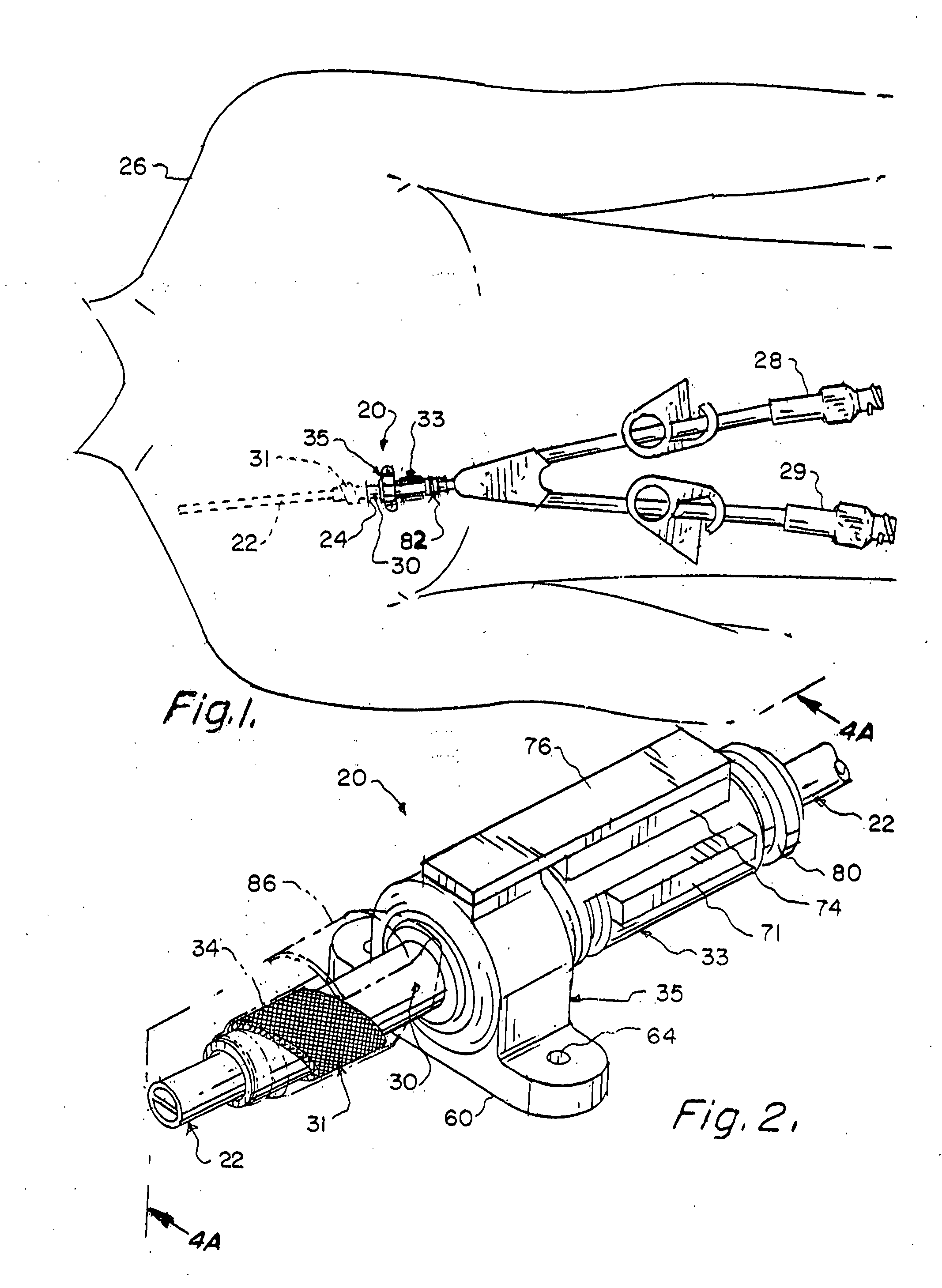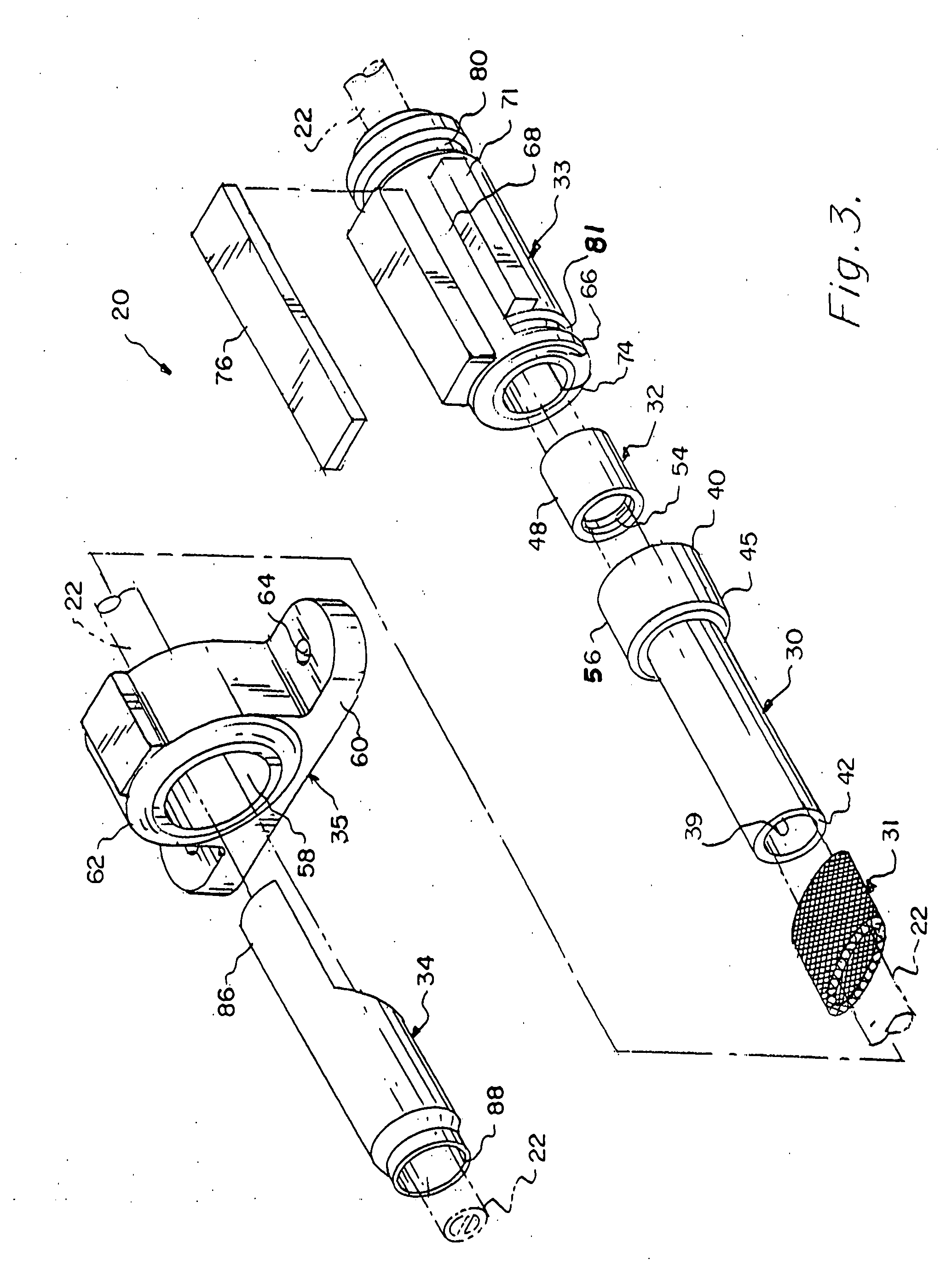Apparatus and method for percutaneous catheter implantation and replacement
a technology of percutaneous catheter and implantation device, applied in the field of medical technology, can solve the problems of increasing the difficulty of removing and/or repositioning an implanted catheter, and causing the implanted catheter to become damaged, so as to avoid tissue damage to the patient, easy peeling of the sheath, and easy fracture
- Summary
- Abstract
- Description
- Claims
- Application Information
AI Technical Summary
Benefits of technology
Problems solved by technology
Method used
Image
Examples
Embodiment Construction
[0028] Various medical regimens relating, for example, to hemodialysis drug infusion, plasmapheresis, etc., use a percutaneously implanted conduit for conveying fluid and / or electric signals to / from an interior body site. The present invention is directed to a method and apparatus for facilitating the implantation and utilization of a percutaneous conduit (e.g., catheter) and for facilitating the positioning, repositioning, and replacement, or exchange, of the catheter.
[0029]FIG. 1 schematically depicts an assembly 20 in accordance with the invention for percutaneously implanting a catheter 22 through an incision 24 in a patient 26 undergoing an exemplary hemodialysis procedure. In such a procedure, a dual lumen catheter 22 is typically used with the two lumens being respectively coupled to separate exterior flow couplers 28 and 29.
[0030] Attention is now directed to FIGS. 2-4 which depict a preferred catheter assembly 20 in accordance with the present invention. FIG. 3 best shows...
PUM
 Login to View More
Login to View More Abstract
Description
Claims
Application Information
 Login to View More
Login to View More - R&D
- Intellectual Property
- Life Sciences
- Materials
- Tech Scout
- Unparalleled Data Quality
- Higher Quality Content
- 60% Fewer Hallucinations
Browse by: Latest US Patents, China's latest patents, Technical Efficacy Thesaurus, Application Domain, Technology Topic, Popular Technical Reports.
© 2025 PatSnap. All rights reserved.Legal|Privacy policy|Modern Slavery Act Transparency Statement|Sitemap|About US| Contact US: help@patsnap.com



